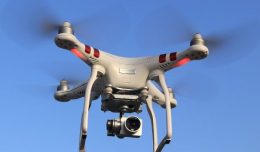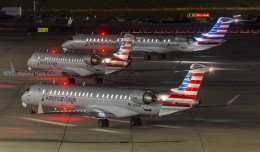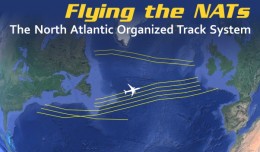Your flight takes off without delay, and you think that once you’re airborne, you’ll be at your destination pretty close to the time on your itinerary. Midway through your descent, your Captain informs you that you’ve got to hold because of poor visibility at your destination. Almost an hour passes as you fly in circles, and you’re relieved for just a moment when you feel the plane start to descend again. Thoughts of your ground transportation and the calm of that first drink you’ll have with your friends that evening fill your head. But another announcement from the Captain rains on your parade as you’re informed that your plane will be landing at an airport hundreds of miles from the one on your ticket. Phooey.
Diversions are simply a part of commercial airline travel. But like many of the annoyances that come with flying, diversions are performed to keep you safe. If the pilots tried to land at your destination airport, the conditions may have put you at risk. Whether it was a weather concern such as low visibility, accumulated snow or heavy crosswinds, a mechanical problem that would prevent you any of the multitude of reasons that can cause them, it is a time to be grateful that you will be placed safely on the ground, even if it’s not where you hoped you’d end up. And that’s just weather. You can divert because of medical emergencies, mechanical issues, natural disasters, customs issues, terror threats, or almost any reason, and the airline industry always has its share of surprises. Thankfully, there are procedures for all.
It also bears mentioning that, for every safety-minded rule you hate, there was likely an accident that provided a very costly lesson hopefully not to be repeated. For nearly almost every weather criteria, security measure, baggage law or most any rule you face when you’re taking to the skies, there can be an airline name and a flight number attached to it that indicates lives sacrificed in the name of safety.
Choosing the Airport
The airport that you end up at in a diversion can be the result of intricate advanced planning or a quick-thinking decision. The same variables that caused you to divert can also make your planned alternate unusable and force you to use an airfield that may not be the airline’s top choice. There is a plethora of information that must be quickly determined by both Captain and Dispatcher to make sure the plane gets on the ground safely once it is realized that the scheduled arrival airport is no longer suitable.
How much fuel do we have?
Nothing happens without gas, and the first thing that needs to be determined when there’s a threat of diversion is “How long can I hold and how far can I fly?” Dispatchers, who plan the entire flight in advance will always allow for extra fuel to be on the aircraft to accommodate various contingencies. For example, federal regulations require that international flights not only carry enough fuel to get the plane from point A to B, but also must have enough to fly for 10 percent of the total flying time of the flight, then to fly to and land at the most distant alternate specified in the flight plan, plus the ability to fly for 30 minutes at holding speed at a height of 1,500 feet above the alternate airport. On top of that, a dispatcher will look at weather and airport conditions to forecast potential problems and still may add more fuel just in case.
That sounds like a lot, and it is, but when things go wrong, you may need every drop. When weather at your destination is bad, it’s likely that the alternate airports and other local airports are also bogged down and you may need to fly further than expected to get on terra firma safely and legally. Or as in the case of the Japanese Earthquake last March, we saw dozens of planes trying to land at airports in an entire region that had been forced to close immediately. The airports that did remain open started to fill up, unable to take on any more aircraft. Many planes ended up declaring fuel emergencies to get on the ground after what was a challenging decision-making process for many crews.
Where can we set her down?
Once you know how long you can remain aloft before your airliner becomes a glider, you need to know which airport is adequate, with the first priority again being safety. In dire emergency situations, of course, all you need is pavement and the space to come to a stop (unless your name is Sully). More realistically and thankfully most commonly, it is a slow, calm and thought-out process of communication between the Captain and Dispatcher to determine where the plane should go.
Airports in the area that have the basic requirements of safety, such as runway of appropriate length, taxiways that can handle the weight of your plane, a control tower, etc., are called “adequate”. Adequate airports are usually known well in advance, and finding an airport that can safely receive the landing plane is the easy part.
The dispatcher will do a scan of those airports in the vicinity, looking for those adequate airports that have legal weather to land based on both the minimum requirements of both the airline and airport. Then a check of the NOTAMs (NOtices To AirMen) to look for any airport functionality issues there may be. This can include an ILS that is out of service, a closed runway, control tower closure, or anything that may affect the plane’s ability to land.
An adequate airport that passes the test of weather and NOTAMs, it is elevated to the title of “suitable”, and the Dispatcher at this point has a short-list of where to send the aircraft.
Operationally Sound
Once safety concerns are addressed, the thinking process switches over to determining which airport can best handle the aircraft in terms of the operation on the ground. If you’re on a major carrier, it is likely that the airport that is chosen will be one that is already served by that airline, and therefore has a presence there. Knowing your uniformed gate agents and appropriate ground equipment will be meeting your plane should make the whole process go much more smoothly (in theory). That part is a no-brainer, though it can get hairy in a hurry.
When you can’t go where everybody knows your name, it becomes a little trickier. Is there a ground handling company at that airport’s terminal that we can hire? Is there an FBO (Fixed Base Operator, a company that serves private flights, usually smaller planes) that can help? Is there parking? Do they have the right kind of tow-bar for my aircraft type? Do they have a place for passengers to sit, do they have air-stairs? Can they provide ground power and maybe an air conditioning cart? A dispatcher or operations agent for the airline will usually make some calls to investigate and square away necessary details to secure ground handling, and many of those ground handling companies and FBOs simply love the impromptu business they get.
Through this, the airport is chosen and the Captain is advised. A brief conversation, a couple questions, discussion of agreement, confirmation of ground frequencies and then the flight dips into the diversion airport. All is well in the world. Or is it?
You’re Grounded
You’ve landed safely, as expected, but you’re not quite out of the woods. If weather is expected to clear up at your destination very soon or if you’re just offloading a sick passenger, you may still need to uplift some fuel to complete your flight. If weather is going to remain restrictive for a couple of hours, then don’t put your magazine away just yet.
Remember that FBO or terminal operator that told you far in advance that they’d be able to handle you and your plane? They may not have been lying, but maybe they weren’t expecting the unexpected. Since your plane wasn’t the only one in the air when that storm hit, other flights need to divert, too. That ramp or terminal that could easily handle your Airbus A320 now must try to accommodate a dozen planes or more.
Equipment is often the first to become scarce. They may only have one or two jetbridges. Maybe just one set of air-stairs, no buses to transport people from the plane to terminal, one ground power unit, one tug, only 3 employees, and that one A320 tow bar…is broken. The catering company they use is closed because it’s after-hours. There’s only one fuel truck, and the truck itself needs to be refilled after each plane gets gassed up. Their sole lav-dumping truck is working, but pumping awfully slow. If you’re an international arrival, you can’t exit the plane until Customs shows up. We didn’t even discuss that all of this may be hampered by falling snow, and God forbid there is something like a power outage. Say…isn’t there a 3-hour tarmac rule?
Even a strong ground operation will have a difficult time when dealing with Mother Nature. The wheels on a tug or aircraft can literally become frozen to the ground, and air-stairs cannot be safely brought up to the aircraft in the extreme ice and/or high wind conditions. A ground crew that can actually manage to deplane all of the aircraft then has to manage a terminal built for a few hundred people that now must contend with one to two thousand people wandering around. And I doubt they have enough Cinnabons.
Many diversions will divert, wait a little while, gas up and fly back to where you had first intended to land. When all goes right, it’s usually due to laws designed to protect you and the efforts of dozens of people that truly made it happen with hard work. When things don’t go as smoothly, and you’re stuck on a plane for hours on end, it’s usually because of a pile of external challenges that may not necessarily be the fault of your airline, or any human for that matter.
It’s been said that a plan is a list of things that don’t happen. The airline world is one of the most complex industries that you’ll find, and what can go wrong will go wrong. Heavy planning and constant training can only get you so far without a little bit of luck as well. But you can always know that pilots, dispatchers, flight attendants, air traffic controllers, ground handlers and even the FAA are out there, training for this. Though sometimes you may think otherwise, they are all looking out for you, with safety as the top priority.







